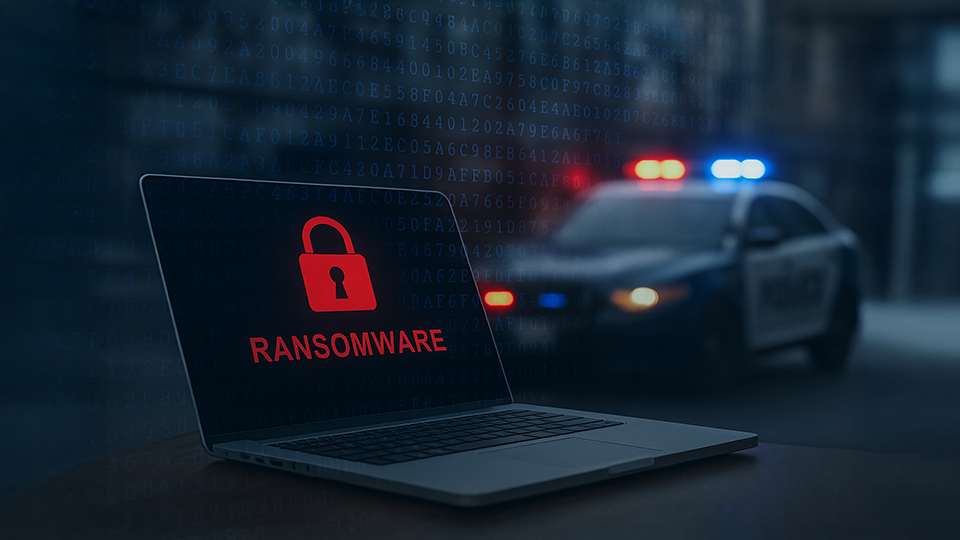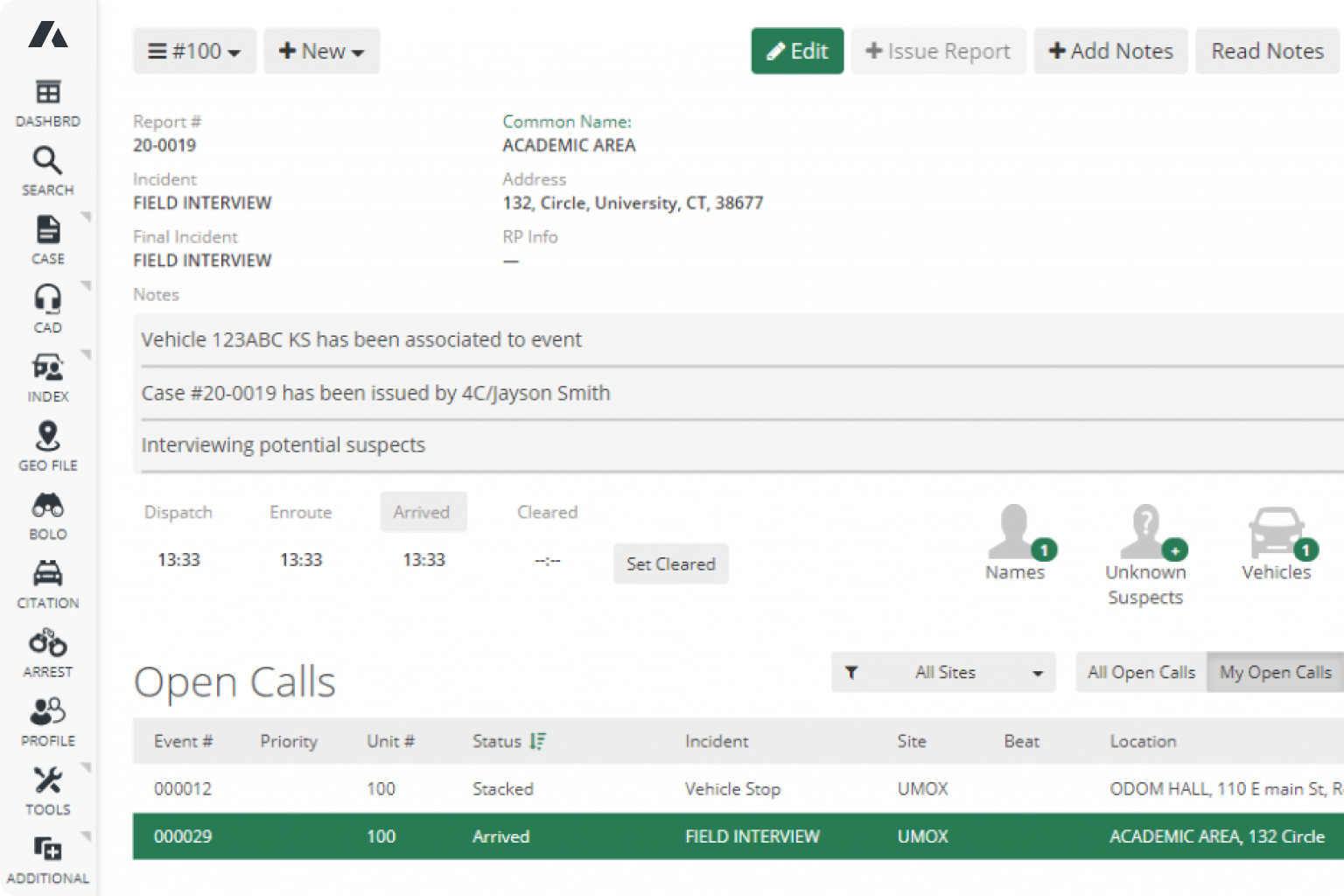In public safety, downtime is not an option. When disasters strike—whether in the form of cyberattacks, power outages, or natural catastrophes—agencies must be ready to respond immediately and operate without interruption. For law enforcement, 911 centers, and emergency services, disaster recovery (DR) and digital resilience are not just IT concerns—they are operational lifelines.
This blog explores how public safety agencies can strengthen their disaster recovery strategies, embrace digital resilience, and protect the communities they serve with modern, cloud-based technology.
The High Stakes of Public Safety Disruptions
When critical systems go offline, the consequences for public safety are immediate and far-reaching. Without access to Computer-Aided Dispatch (CAD) systems, calls for service may be missed or mishandled, delaying emergency response and putting lives at risk.
Data loss can occur in the form of corrupted or inaccessible investigative files, officer reports, and chain-of-custody records—jeopardizing active cases and legal proceedings. Operational paralysis is another major concern, as departments may be unable to coordinate with other agencies or access essential intelligence needed to manage an evolving situation.
Perhaps most critically, public trust erodes when agencies appear unprepared or unable to respond effectively during a crisis. From ransomware attacks locking down police departments to hurricanes flooding on-premise servers, the risks facing public safety agencies are both real and growing.
The Dual Threat: Cyber and Physical Disasters
Disaster recovery planning must address two simultaneous threats:
- Cyber Disruptions: Law enforcement agencies are increasingly targeted by ransomware, phishing, and data theft. A successful breach can paralyze operations for days or weeks.
- Physical Events: Fires, floods, power failures, and other natural events can render on-site hardware inoperable and isolate departments from their data.
Building digital resilience means preparing for both—and ensuring continuity even when infrastructure or access is compromised.
Core Elements of a Public Safety DR Strategy
A comprehensive disaster recovery strategy for public safety should include:
- Redundant Infrastructure: Secure, cloud-based backups and geographically diverse hosting ensure continuity even if a local data center fails.
- Failover Communication Tools: Radio, satellite, LTE, and backup dispatch stations allow operations to continue if primary channels are lost.
- Continuity of Operations Plans (COOPs): Define critical workflows, roles, and communication hierarchies to maintain function during a crisis.
- Interagency Collaboration: Shared platforms and standardized protocols improve cross-agency coordination during emergencies.
Role of Technology in Building Resilience
Technology is not just a tool—it’s the backbone of disaster readiness. Systems designed with resilience in mind enable public safety agencies to maintain operations even in the most challenging conditions. Real-time access to CAD/RMS data from anywhere allows personnel to stay connected and responsive, while mobile-enabled platforms ensure that officers can remain informed and operational in the field.
These technologies also facilitate secure information sharing across agencies and jurisdictions, improving coordination during emergencies. Additionally, they automate essential functions like incident reporting, asset tracking, and resource allocation, streamlining operations when speed and accuracy are critical.
Agencies that invest in resilient technology platforms are better equipped to respond quickly, effectively, and confidently when disaster strikes.
Testing and Training: The Forgotten Pillars
Having the right tools isn’t enough. Public safety agencies must:
- Test DR systems regularly to ensure backup and failover systems activate as expected.
- Conduct tabletop and live drills simulating various scenarios—ransomware attacks, data center failure, comms blackouts.
- Provide ongoing training for staff on DR procedures and communication plans.
Preparedness requires practice. Without it, even the best systems can falter when stress hits.
Federal Guidance and Best Practices
Federal agencies have released comprehensive guidance to help public safety organizations strengthen their disaster recovery and continuity strategies. The CISA Public Safety Communications and Cyber Resiliency Toolkit provides detailed steps for establishing redundancy, practicing good cyber hygiene, and restoring communications after a disruption.
FEMA’s Continuity Guidance Circular offers a foundational framework for developing COOPs tailored to essential government functions. Standards like the FBI’s CJIS Security Policy, Next Generation 911 (NG-911), and FIPS outline requirements for maintaining secure, interoperable, and reliable systems in high-risk environments.
Collectively, these resources make it clear: continuity planning is not a luxury—it’s a federal priority.
How ARMS Ensures Cloud Security and Business Continuity
ARMS was built from the ground up with disaster recovery and digital resilience in mind. Our cloud-hosted platform empowers agencies to maintain operations under any condition, with built-in safeguards that include:
- Microsoft Azure Government Hosting: ARMS operates in a CJIS-compliant, single-tenant cloud environment with geographic redundancy and round-the-clock monitoring.
- Automated Backups & Real-Time Syncing: All data is backed up continuously and made instantly available to authorized users, minimizing data loss risk.
- Multi-Layered Security: Features like MFA (Multi-Factor Authentication), intrusion detection, vulnerability scanning, and firewall management protect against cyber threats.
- Regulatory Compliance: ARMS meets FBI CJIS Security Policy, NIBRS, Clery, SOC 2 Type 2, and ISO 27001 standards—ensuring the highest levels of security and reliability.
- Eliminates On-Premise Vulnerabilities: No more dependency on aging servers, local power grids, or manual patching. With ARMS, your entire system stays online, secure, and scalable.
Whether your agency faces a cyber breach, server failure, or environmental crisis, ARMS ensures your data and operations remain uninterrupted.
Making Resilience a Priority
Disaster recovery is not just about bouncing back—it’s about never going down in the first place.
Agencies that invest in cloud-based, secure, and redundant systems are better prepared to protect their communities when it matters most. With ARMS, you don’t just plan for disaster—you outmaneuver it.
Is your department ready to build digital resilience? Contact us to learn how ARMS can support your disaster recovery and continuity goals.



